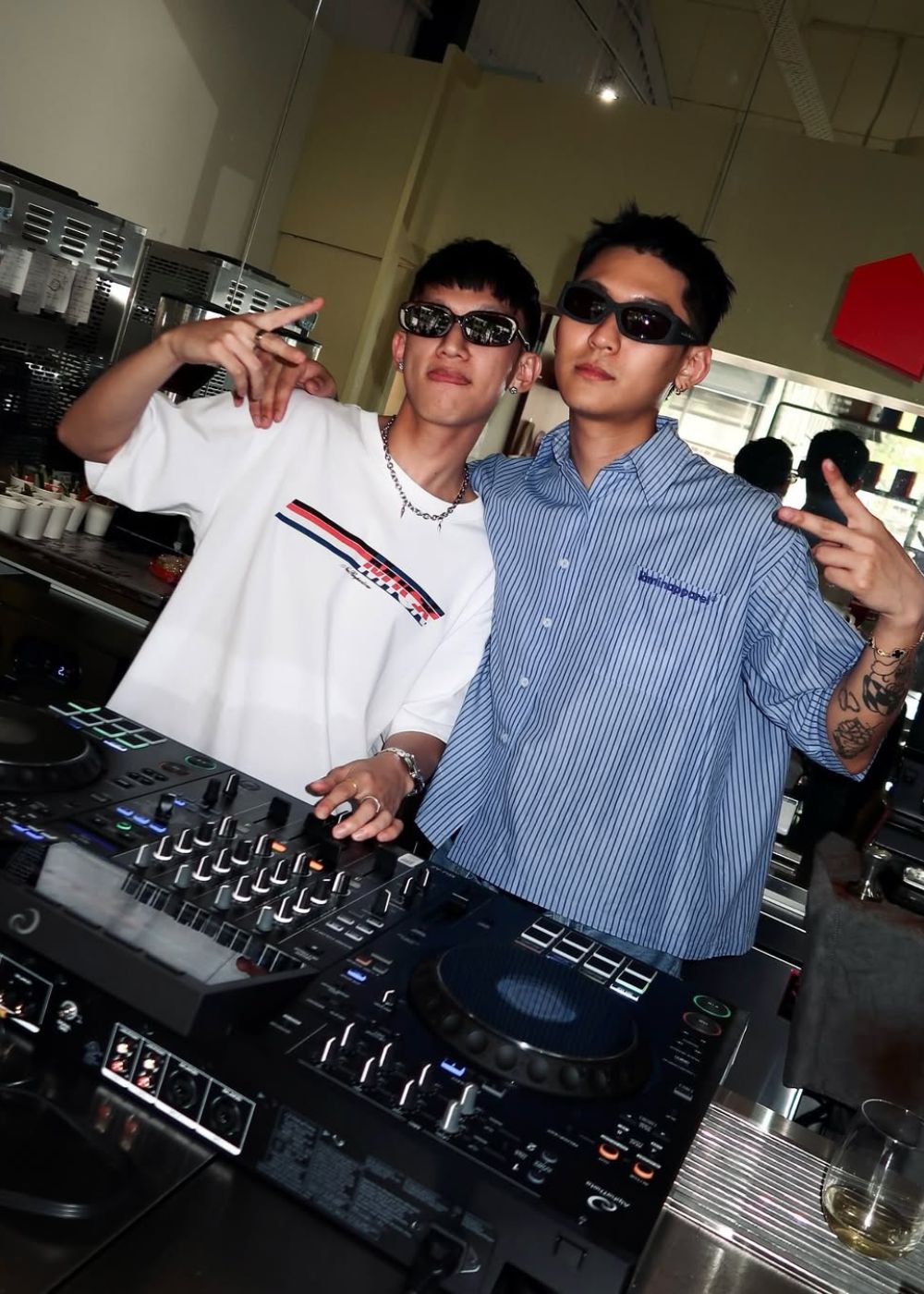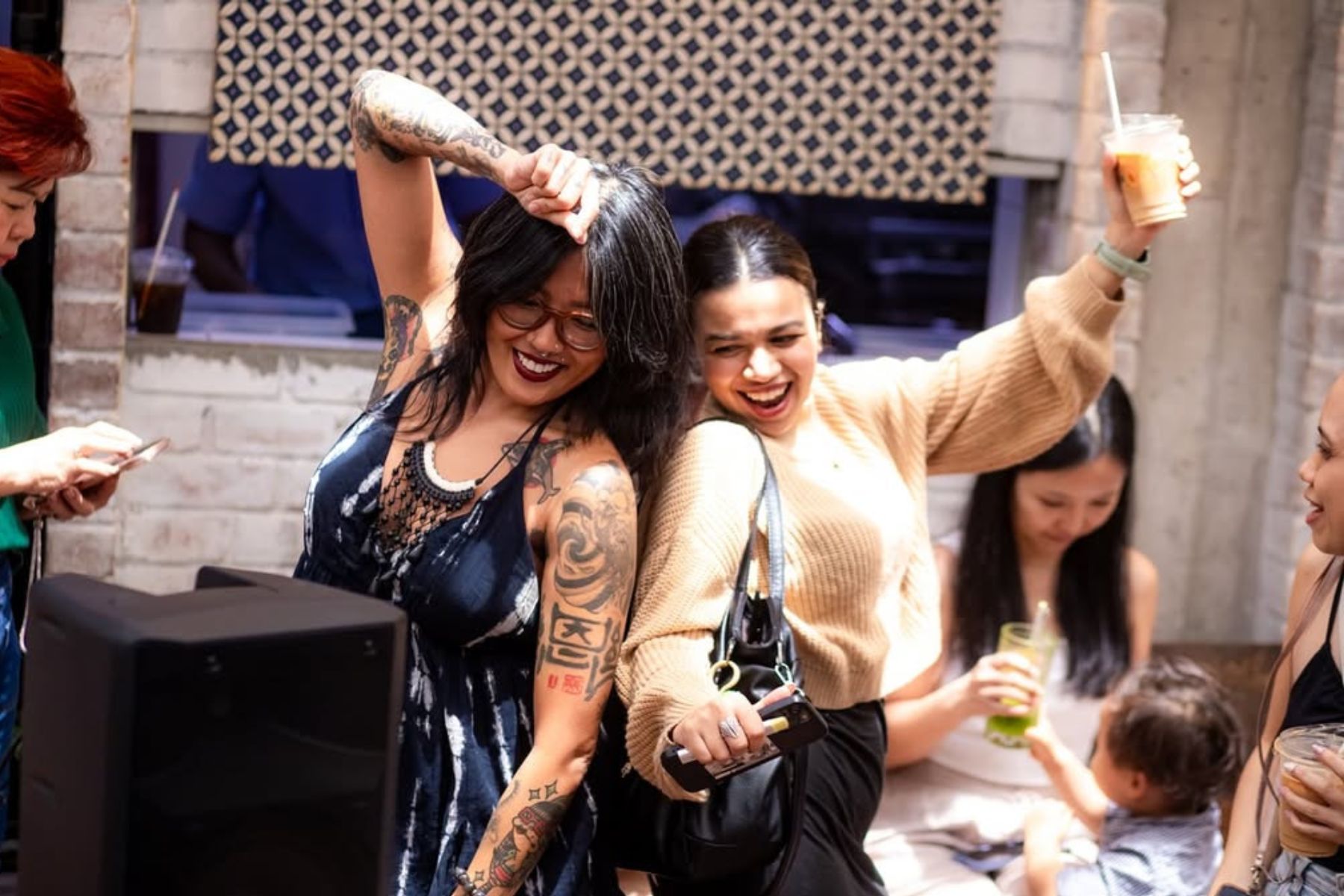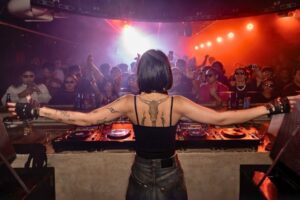If you haven’t noticed, coffee raves are everywhere this year. People are trading late-night clubs for daytime gatherings where the DJ spins beats, the crowd sips on coffee (among other non-alcoholic drinks), and the party ends before dinner time.
It may sound unusual at first – after all, raves have long been linked to all-night dancing, neon lights, and plenty of alcohol. But this new way of partying is flipping that script.
View this post on Instagram
First popularised in cities like London and New York around the mid-2010s, the coffee rave trend began as a wellness-inspired twist on raving. Powered by caffeine instead of cocktails, these events are part of a bigger lifestyle shift: as a society, we’re rethinking the role of alcohol, the importance of sleep, and the ways we socialise.
In an era where wellness isn’t just a trend but a lifestyle priority, coffee raves have arrived at exactly the right time.

What are coffee raves?
If you don’t already know what they are, think of coffee raves as raves without the alcohol and late-night chaos. Besides the obvious – yes, it’s a rave with coffee – the essence goes much deeper.
Picture the same ingredients: thumping electronic music, live DJs, and dancing crowds, but set in an entirely different context. Instead of smoky clubs at 2 a.m., it’s cafés, cultural spaces, or even bakeries in broad daylight. Instead of cocktails, it’s cold brews, matchas, and maybe even kombucha.
View this post on Instagram
The idea isn’t just aesthetic; it’s cultural. Rave culture has always been about pushing boundaries, from underground warehouse parties in the 90s to today’s massive festival circuits. Coffee raves are part of that same lineage, but adapted to a new era where health, balance, and “sober curious” lifestyles are on the rise.
The concept grew alongside broader wellness movements that emphasise mindfulness and moderation. Coffee raves are a natural fit: they allow people to immerse themselves in music and movement, but without the fog of alcohol or the disruption of staying out all night.

In many ways, coffee raves are reframing what “fun” can mean. They show that social connection and celebration don’t have to come at the expense of health. Dancing, laughing, and making memories in a clear-headed, energised state isn’t just possible – for many, it feels liberating.
Why it’s all the rage?
To understand why they’re spreading so quickly, it helps to look at the key drivers behind the movement:
View this post on Instagram
A healthier approach to social life
Coffee raves extend the culture of yoga studios, fitness classes, and mindful eating into the realm of parties – turning raving itself into a healthier practice. They represent a growing desire to enjoy music, movement, and community without the trade-offs of traditional nightlife. Instead of sacrificing health, sleep, or productivity for a night out, people are embracing coffee raves as a way to experience all the joy of a party without the hangover or fatigue that usually follows.
Daylight matters
Who says raving has to happen at night? One of the biggest appeals of coffee raves is their timing. Held in the morning or afternoon, these parties slot neatly into busy schedules without derailing work, studies, or weekend plans. You can lose yourself in the music at noon and still make it to a dinner reservation, meet family in the evening, or even head to the library afterward. Because there’s no alcohol to recover from and no 4 a.m. bedtime to wreck your rhythm, the whole experience feels more productive, leaving you energised rather than drained.
Affordability and accessibility
Traditional clubbing often comes with a hefty price tag, from entry fees and pricey drinks to late-night transport. Coffee raves, by contrast, are budget-friendly and inclusive. Tickets often cost little more than a cup of coffee, and the events wrap up by afternoon, sparing attendees the expense of late-night travel. Just as importantly, they create a welcoming space for everyone, including those who don’t drink for personal, cultural, or religious reasons. By lowering both the financial and social barriers, coffee raves open the dance floor to a much wider community.
The social media factor
Coffee raves thrive on their aesthetic as much as their energy. Bright cafés, latte art, and DJs framed by espresso machines create a quirky, Instagram-worthy backdrop that feels fresh and aspirational. The sight of packed coffee shops transformed into dance floors with baristas pulling shots while bass-heavy tracks drop make for content that spreads fast on TikTok and Instagram, fueling curiosity and accelerating the trend’s global rise.
View this post on Instagram
All of this has made coffee raves more than just an alternative to nightlife. For many, they’re becoming the new default for healthier fun, creating a cultural language of celebration grounded in wellness, inclusivity, and balance.
A Malaysian perspective
Malaysia has always had a rich café culture, especially in urban centres like Kuala Lumpur and Penang. With specialty coffee shops booming, it’s no surprise that coffee raves are making their way into the local scene.
Venues such as Brew and Bread, Kenny Hills Bakers, Lisette’s, and more have experimented with hosting daytime party events, blending Malaysia’s love of café hangouts with the thrill of live music. Instead of neon lights and bottle service, these gatherings offer artisanal coffee, pastries, and a space to dance under natural daylight.
View this post on Instagram
For younger Malaysians, this trend resonates deeply. Many are health-conscious, budget-aware, and socially driven. Coffee raves strike the perfect balance – celebration without excess, fun without regret.
While coffee raves are generally alcohol-free, some alcohol brands have also began experimenting with daytime rave-style events to cater to younger crowds who don’t mind a casual drink. Even so, these gatherings still tend to feel safer and lighter than traditional nightlife.
View this post on Instagram
As local cafés and cultural spaces continue to experiment with this form of daytime celebration, it’s becoming clear that coffee raves are more than just a passing trend – they mark a shift in how we define community, wellness, and fun.
Whether they fade as a curiosity or cement themselves as a lasting fixture in urban life, one thing is certain: coffee raves are changing the way we gather, celebrate, and connect.
Read more lifestyle stories here.
Feature Image: @lisettes.my / Instagram








